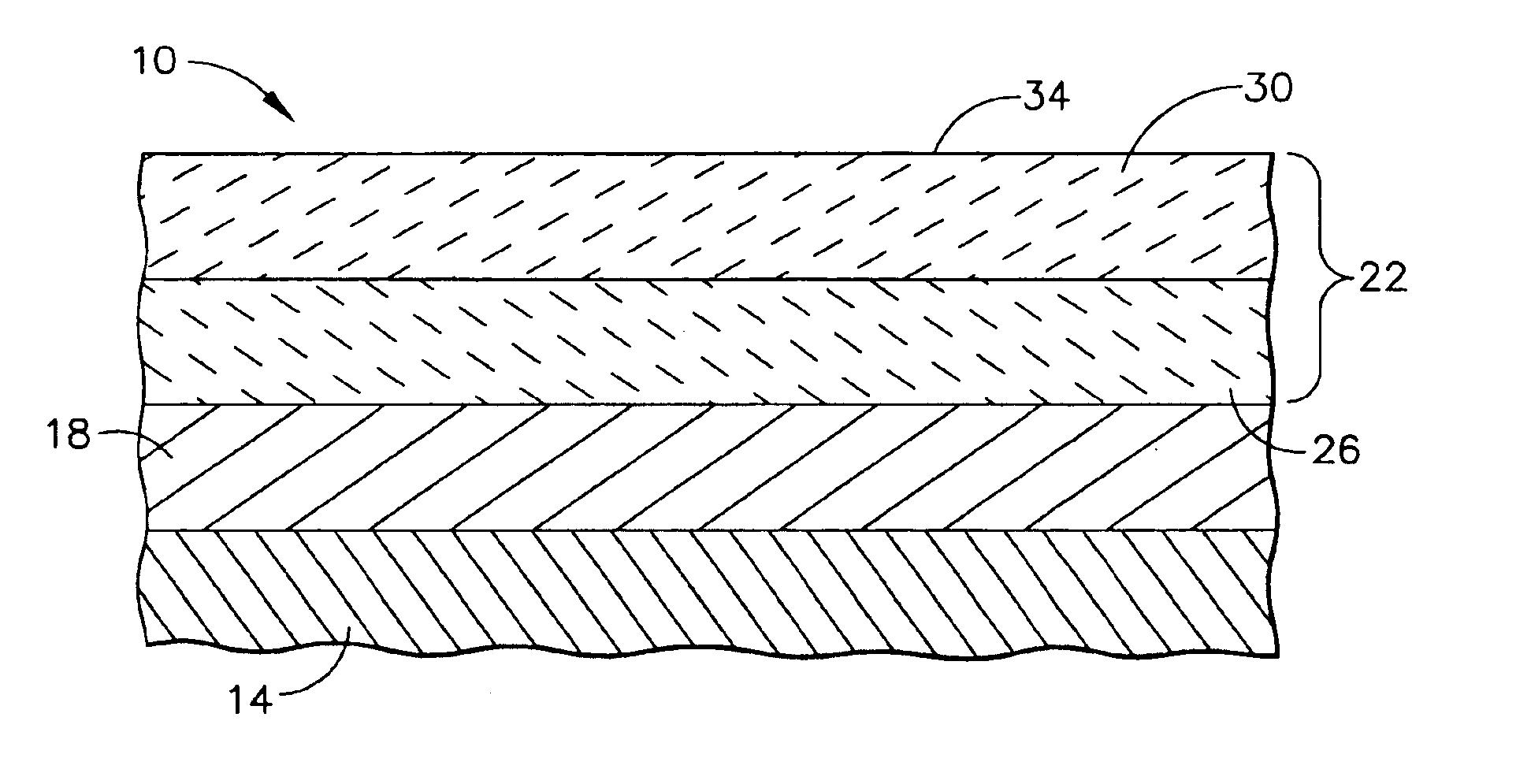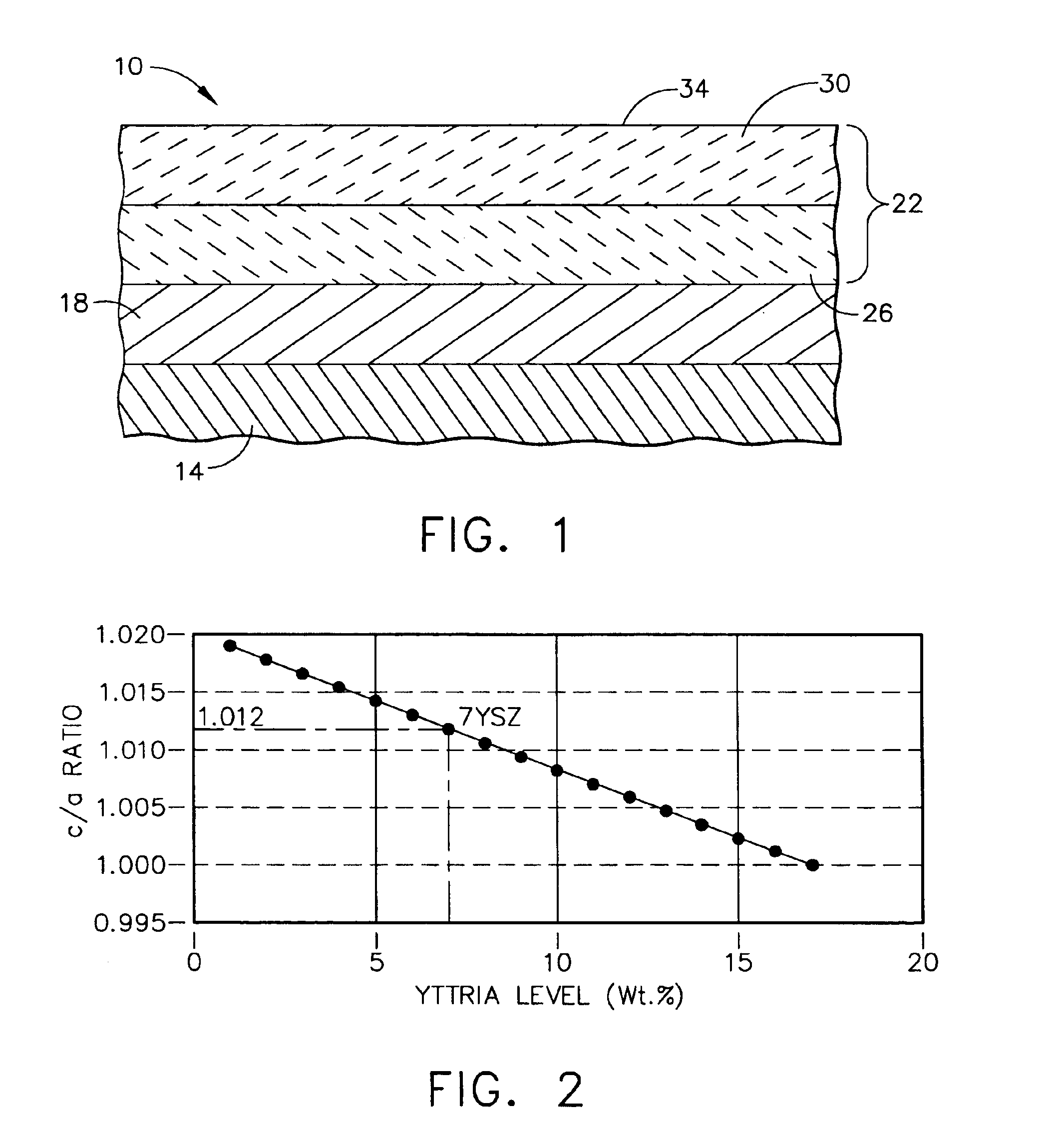Thermal barrier coatings with protective outer layer for improved impact and erosion resistance
a technology of thermal barrier coating and protective outer layer, which is applied in the direction of chemical vapor deposition coating, magnetic recording, record information storage, etc., can solve the problems of thermal barrier coatings that are susceptible to various types of damage, coatings are susceptible to significant temperature extremes and degradation, and other properties of thermal barrier coatings can be adversely affected, so as to improve impact and erosion resistance, reduce thermal conductivity, the effect of improving the impact and erosion resistan
- Summary
- Abstract
- Description
- Claims
- Application Information
AI Technical Summary
Benefits of technology
Problems solved by technology
Method used
Image
Examples
Embodiment Construction
As used herein, the term “ceramic thermal barrier coating materials” refers to those coating materials that are capable of reducing heat flow to the underlying metal substrate of the article, i.e., forming a thermal barrier, and which have a melting point that is typically at least about 2600° F. (1426° C.), and more typically in the range of from about from about 3450° to about 4980° F. (from about 1900° to about 2750° C.). Suitable ceramic thermal barrier coating materials for use herein include, aluminum oxide (alumina), i.e., those compounds and compositions comprising Al2O3, including unhydrated and hydrated forms, various zirconias, in particular chemically phase-stabilized zirconias (i.e., various metal oxides such-as yttrium oxides blended with zirconia), such as yttria-stabilized zirconias, ceria-stabilized zirconias, calcia-stabilized zirconias, scandia-stabilized zirconias, magnesia-stabilized zirconias, india-stabilized zirconias, ytterbia-stabilized zirconias as well as...
PUM
| Property | Measurement | Unit |
|---|---|---|
| thickness | aaaaa | aaaaa |
| thickness | aaaaa | aaaaa |
| thickness | aaaaa | aaaaa |
Abstract
Description
Claims
Application Information
 Login to View More
Login to View More - R&D
- Intellectual Property
- Life Sciences
- Materials
- Tech Scout
- Unparalleled Data Quality
- Higher Quality Content
- 60% Fewer Hallucinations
Browse by: Latest US Patents, China's latest patents, Technical Efficacy Thesaurus, Application Domain, Technology Topic, Popular Technical Reports.
© 2025 PatSnap. All rights reserved.Legal|Privacy policy|Modern Slavery Act Transparency Statement|Sitemap|About US| Contact US: help@patsnap.com



